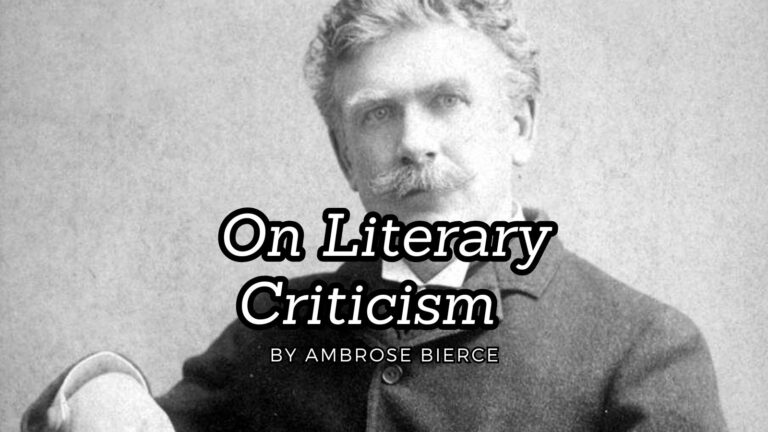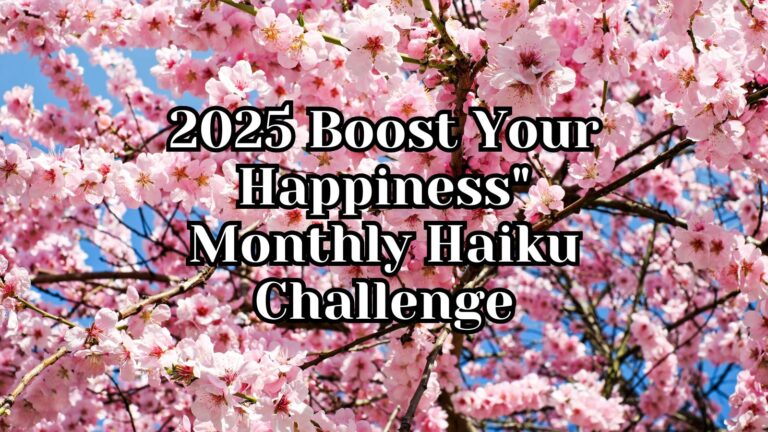10 Ways You Should Use Clichés
10 Ways You Should Use Clichés: Writers know it’s generally best practice to avoid overused clichéd phrases in their prose to come across as original and articulate. But sometimes, judiciously leaning on well-worn expressions or familiar idioms used sparingly at strategic moments can enhance certain aspects of your writing.
While developing a compelling authorial voice means consciously working to describe ideas and experiences using fresh metaphorical language rather than lazily recycling the same trite literary short-cuts again and again, that doesn’t mean we must ultimately strike common phrases from our vocabulary as if they were toxic contaminants. When strategically deployed rather than haphazardly injected everywhere as verbal fillers due to lack of creativity, aptly utilized idiomatic expressions can strengthen select fictional and non-fictional writing in modest yet meaningful dimensions.
So treat clichés not as automatic deal-breakers doomed to dull writing’s impact but as linguistic garnishes offered through subtle sprinkles of familiarity awakening readers’ sensory and emotional connections to crystallize connotations, much like when chefs incorporate a pinch of essential salty, sweet, or sour ingredients into elevated cuisine to selectively intensify flavor profiles for heightened palatal potency relative to other complex elements.
In that spirit, here are ten specific times when a dash of cliche or idiom can enhance different aspects of your writing recipe with readers by adding welcome depth that more original ingredients alone may lack on their own. Use these tired phrases judiciously as needed rather than dumping them wantonly. But don’t cross them off your menu entirely, either.
Also, as a reminder, we have many other tips on writing on our site.
1 When Writing Dialogue
Let your characters speak like real people in conversation, clichés and all. Dropping those common phrases and idioms, people use without thinking into everyday dialogue helps it sound exponentially more natural and genuine.
Rather than having characters always speak in eloquent soliloquies, peppering their conversations with trite sayings people latch onto, like “better late than never” or “the early bird catches the worm,” makes exchanges feel more lifelike, authentic, and true-to-life.
After all, few people communicate exclusively in erudite words and original witty repartees in real life. More often, everyday speech depends heavily on those familiar fillers and time-worn turns-of-phrase ingrained from repetition.
So, instead of forbidding characters from ever resorting to platitudes and worn-out metaphors in dialogue to avoid clichés, embrace these casual expressions people organically trade without a second thought. Because peppering in phrases like “cool as a cucumber” or “easy as pie” mirrors how we colloquially communicate. Banning banal figures of speech entirely risks characters sounding unusually uptight, pretentious, and unnatural.
With fictional dialogue, as with compelling nonfiction prose, the ultimate test boils down to authenticity. Creative writing instantly bridges the emotional distance between readers and diverse fictional personas by letting characters speak more genuine dialogue, complete with clichés flowing casually into conversation. Resulting in tangible feelings of seeing oneself reflected on pages populated by fully-realized people rather than lifeless caricatures or models of proper speech never heard outside prescriptivist style guides.
2 To Quickly Set a Scene
If readers instantly know you mean an oppressively hot, sticky, sweltering summer day by briefly mentioning “the dog days of summer,” use that tired phrase so you don’t have to elaborate with paragraphs explicitly spelling out each descriptive detail.
Certain well-worn idioms hold power to immediately communicate entire scenes by tapping into readers’ shared cultural knowledge. For example, referring to “cabin fever” automatically conveys being trapped inside one’s home during cold, unpleasant weather when going outside remains impractical.
Or alluding to “the witching hour” successfully implies an eerie late-night setting shrouded in darkness with the wind howling outside. By leveraging these common cultural idioms and descriptive cliches rather than actively avoiding them, writers can swiftly establish the mood, atmosphere, and context of heavy-handed explanations.
So if you need readers to instantly envision a harsh, bitter winter landscape complete with biting winds and snow drifts piling up, a quick metaphor about it being “colder than a witch’s tit” efficiently achieves that aim without elaborate sensory descriptions of icy temperatures and frozen precipitation. While that particular saying qualifies as tasteless and crude depending on the audience, its familiarity triggers the intended hereditary imagery.
The key remains to stay conscious of which cliched terms pack adequate shorthand scene-setting power depending on your readers and selectively apply them only to speed up communicating familiar environmental factors during drafting. Then, during revisions, writers can still assess if using slightly less common analogies better serves descriptions or reformat passages entirely. But some weathered idioms still earn their keep for rapid early-stage context settings.
3 To Support Message or Theme
A common platitude like “the grass is always greener on the other side” or “money can’t buy happiness” can quickly and effectively convey sentiments that align with and reinforce your central message or theme.
By tapping directly into these familiar cultural idioms, writers implicitly signal to readers they plan to explore common ground held as shared conventional wisdom or traditional values. Rather than having to build metaphorical examples from scratch demonstrating another cliched truism that “the best things in life are free,” writers capitalize on these communal ideas already etched into public consciousness.
For instance, fiction writers centering stories around midlife crises or restless spouses questioning relationship commitment need not elaborate extensively on the intrinsic discontent symbolized by the phrase “the seven-year itch,” thanks to its ubiquity. Just tacitly invoking that worn marital clause is enough for most readers to grasp its significance.
Similarly, a nonfiction writer emphasizing the ultimate emptiness of seeking fulfillment through fame and celebrity status alone taps perfectly into the societal idiom “it’s lonely at the top” to elegantly reinforce that sobering message about prioritizing more meaningful pursuits.
Of course, exclusively relying upon only predictable platitudes risks dulling creative edge. But sprinkling in the occasional familiar phrase, fable, or conventional bits of folk wisdom already resonating with audiences strengthens connections to recurring themes audiences instantly recognize as reflecting tried and true life lessons. This elevates thematic writing without heavy-handed explanations as to why “the road to hell is paved with good intentions” or how “pride comes before a fall.” Most immediately grasp the intrinsic karmic wisdom within such adages, rewarding writers who effectively incorporate them.
4 When Establishing Character
Have an uptight, obsessive character tendency to “sweat the small stuff” or a reckless, devil-may-care one prone to “throw caution to the wind” based on clichés fitting their respective personalities.
Like dialogue, learning idiomatic expressions can help efficiently convey fictional personalities and organically distinguish quirks. Rather than bluntly stating a character overthinks details or compulsively stresses routine decisions, demonstrating this neurotic inclination through related actions and phrases organically embedded in scenes better cement traits for readers.
For example, rather than generically describing a character as “a worrywart,” depict their fretting personality via behaviors like triple-checking locks or using phrases like “better safe than sorry.” Or have a generally bold adventurer confirm their daring nature by declaring intentions to “go for broke” or pursue dreams despite naysayers warning them to “not put all their eggs in one basket.”
In moderation, spelling out such characteristics explicitly risks sounding contrived or heavy-handed. But demonstrating distinguishing attitudes and worldviews through related cliched idioms arising conversationally helps readers intuit personalities and mannerisms more naturally.
Much like dialogue, allowing characters to sometimes think and communicate through familiar platitudes mirroring their dispositions adds authenticity and dimensional depth without needing upfront labels classifying inclinations overtly. This embedded storytelling better immerses audiences into identifying with players on the page, reflecting behaviors and phrases that are recognizably human rather than purely functional roles listing quirky attributes explicitly. So, employ common idioms in action and dialogue to cement impressions of characters’ fundamental qualities and foibles consistently backed by showing rather than lifeless telling alone.
5 To Illustrate Cultural Context
Placing references to relevant Greek myths and legends in fantasy stories set in ancient Hellenic times or sprinkling in very British idioms and slang into a Victorian-era historical novel helps appropriately develop setting-specific cultural context and accurate tonal resonance.
Just as overzealous editing risks dialogue losing a sense of authentic cadence and regional dialect, removing culturally situated clichés and native idioms can strip unique atmospheric elements from enriching fictional worlds dependent on such linguistic textures. For example, a colonial Indian story world seems stripped of layered nuance without sprinkling Hindi words and religious concepts organically incorporated conversational reflected period norms. Or political dystopian narratives contextualized by incorporated Soviet communist rhetorical clichés referencing heroic comrades carry more implications than equivalent phrases in English alone.
While invented fantasy realms ultimately remain boundless products of imagination, even genres benefiting from extensive original creation like sci-fi and speculative sometimes benefit from the judicious use of linguist clichés borrowed from natural world groups and cultures. For example, drawing battle terminology in futuristic space warfare scenarios from established naval and cavalry lexicon ultimately helps reader comprehension by applying known framework navigating pitched combat dynamics rather than wholly unfamiliar phrasing. Additionally, painting alien species with varying levels of inherent xenophobia or species attitudes easily coopts existing sociological shorthand for quick reference rather than nuancing alternative social hierarchies endlessly explained.
Ultimately, every writer must weigh whether to lean too heavily on cliched cultural and linguistic risks undermining uniquely creative settings not intended to homage real places or peoples. But the occasional well-placed anachronistic idiom can provide touchstone anchoring vastly invented cosmic cultures to glimpses of shared human experiences binding readers to relatable elaborate worlds. So don’t fear judiciously deploying some choice antiquated idioms to spice up entirely fictional lands.
6 For Comedic Irony or Sarcasm
Twist up or mock worn-out phrases and cliches deliberately for humorous meta-commentary and satire within your writing. Ironically, calling upon trite expressions literally or figuratively creates opportunities to poke fun at stale linguistic conventions.
Slyly giving cliched phrases and unexpected literal treatment opens doors for funny interpretations, turning familiar idioms on their heads. For example, a character struggling to secure an actual staple food, “bringing home the bacon,” instead of simply earning a living wage, creates an absurdly amusing scenario playing off expectations. Or consider how repeatedly name-dropping the idea of an “elephant in the room” until a pachyderm appears punctures tense situations by personifying the linguistic metaphor.
Similarly, directly calling out semantic cliches and flippantly dismissing their relevance in context draws attention to their overuse in refreshing ways. After a friend offers conventional wisdom to a distressed character that “there’s plenty more fish in the sea” regarding romantic prospects, said character indignantly insists they want neither fish nor seafood, which mocks and deflates the inane platitude.
Putting tired phrases under the direct spotlight through cheeky word games and ironic twists allows writers to breathe new comedic life into overworked expressions. Deliberately showcasing cliches rather than avoiding them entirely will enable readers to collectively understand the underlying linguistic joke by tapping into shared familiarity only to dash sly expectations. So consider cliches fair game for funny experiments reversing meanings for satirical effect.
7 To Demonstrate Language Fluency
In some languages and translations, adeptly using equivalent native idioms and lingual quirks illustrates exceptional fluency and intimate cultural-linguistic knowledge beyond strict vocabulary alone.
For example, an English speaker confidently deploying the French idiom “l’esprit de l’escalier” (staircase wit) to describe the thinking of an ideal comeback too late demonstrates a keen awareness of Gallic conversational norms. Similarly, a Japanese translator preserving complex causal links using “yahari” (get text) or “taru” (because/it follows that) captures nuances English equivalents might simplify. Or a writer alluding to the Russian proverb “trust, but verify” tapping into post-USSR sentiments conveys keen regional insights through native lexical mirrors.
This also applies to dialects within shared tongues. An American writer capturing distinctive Southern cadences and sayings like “I’m finer than frog hair” shows more profound familiarity with Dixie’s linguistic identity than solely relying on neutral vocabulary. Just as a British writer embracing Cockney rhyming slang terms like “apples and pears” for stairs has a better grip on working-class London speech.
Ultimately, for translators, linguists, and cross-cultural writers, embracing each language’s vivid vernacular, signature slang, and ubiquitous idioms gets closer to genuinely capturing unique voices than dryly rendering mere meanings allows. This mastery demands emphasizing flavor and spirit of expression through equivalent idiomatic anchors culturally embedded in disparate tongues. While smooth translation prides accuracy, exemplary efforts chase elusive ethnographic essence through idioms, sending readers native ripples of recognition that sterile perfection ignores. For peak fluency, be confident to code-switch fluently into native idiomatic speech beyond textbook vocabulary.
8 To Purposefully Invoke Familiar Imagery
Leveraging culturally common phrases or metaphors about concepts like love, grief, death, and other profound aspects of human existence allows readers to instantly emotionally connect to written works by intuitively recognizing these shared linguistic and cultural touchstones.
Tactically tapping into established collective idioms when dealing with heavy themes, writers signal to audiences an intention to explore relatable common ground held sacred as communal wisdom. For example, debates around morally complex medical issues like physician-assisted death pull rhetorical weight from ingrained idioms like “death with dignity” versus “sanctity of life,” framing debates through well-worn context rather than wholly reinventing perspectives on essentially timeless matters.
Or when penning tales of lovers kept tragically apart, calling upon the popular imagining of soulmate pairs as “star-crossed lovers” swiftly stirs reader pathos by tapping sentimental veins of other canonical romantic tragedies from poetic antiquity to modern pop culture imprinting through osmosis-like cultural diffusion over generations. So pairing destined yet doomed paramours as “Romeo and Juliet” establishes communicative shorthand minus extensive elaborations on their fateful romantic plight.
While avoiding cliche figures of speech remains the best practice in most creative writing contexts, sometimes strategically embracing them around impactful themes allows swifter emotional impacts. Few cultural idioms grow ossified expressions, outliving continued relevance without retaining kernels of intrinsic profound truth at their core. Leveraging these linguistic communal threads weaves writers quicker into hearts and minds through uniting shared humanity.
9 When Time Setting Requires It
Having 1970s characters naturally describe things as “Far out!” or referring to “getting hosed” seamlessly taps into the dated lingo and cliched slang fitting the historical context and period.
While most writing benefits from avoiding reliance on stale idiomatic phrases, stylistically mirroring the rah-rah optimism of the 1970s with its groovy hippie lexicon transports audiences effectively to the not-so-distant past. Depicting World War II soldiers speaking in period-echoing slang like “don’t take any wooden nickels” cements the 1940s setting pronouncedly.
However, exclusively leaning on cliches risks flattening regional diversity and individualized voices. But judiciously peppering in some choice era-resonant idioms prevents otherwise colorful period characters from feeling like little more than modern mouths masquerading in old-timey costumes by capturing touches of decades’ distinctive atmospheres.
For example, though the 1980s’ ubiquitous label “greed is good,” stock brokerage culture risks ringing cliched now, excluding all reference to such conspicuous consumption mottos feels whitewashed revisionism misaligning with lived 80s capitalistic values. Just as spoofing uptight 1950s suburban respectability to subversive counterculture through shows like Pleasantville requires retaining certain sanctimonious idioms to punk effectively.
Linguistic accuracy is crucial in fictional time travel as costumes and sets remain visual world-building. So consider treating stiff period cliches as you would tangible period props: not as default crutches but as occasional salt and pepper dashing distinctive historical flavor into overall presentation stew rather than overpowering entirely with anachronistic modern sensibilities out of place contamination period portrayed piece. Get the blend of old and new diction through context so audiences taste the bygone era you aim to bring to life.
10 For Impactful First Drafts
Avoid excessively stifling that initial creative flow, dulling stylistic instincts, worrying too much about cliché use, or striving for absolute originality during first drafts. Write as freely and openly as possible early on to capture core ideas and impactful moments organically without constant inner critics derailing progress, perfecting every line prematurely.
The drafting stage remains a time for seemingly unfiltered idea generation rather than refined analysis. So, silence self-judgements challenging whether familiar phrasing sounds sufficiently distinctive despite effectively communicating intentions. Allow thoughts to cascade unfiltered onto pages, embracing the messy clichés and platitudes bubbling up instinctively rather than doubting the authenticity of drafting derivative descriptions.
Trust revisions as periods for scrutinizing whether overused idioms undermine your distinctive authorial voice or specific narrative’s tone. Strategically replace clunky clichés with alternative conveyances, elevating those redundant linguistic crutches into more singular phrasings and clarifying your creative commentaries. First-draft lyricism needn’t rhyme or even fully stand the test of time.
Ultimately, clichés remain double-edged devices, proving either lazy linguistic liabilities or powerful linguistic assets depending upon a writer’s judicious discernment and readers’ receptivity. Like most communication tools, overly relying upon familiar idioms grows counterproductive when their ubiquitous presence numbs audiences to potent impacts or drowns distinct authorial voices. Yet banning them entirely risks equally foolish extremes. For skillful writers, recognizing clichés’ strengths and weaknesses enables harnessing their virtues selectively to amplify emotional resonances and linguistic muscle while mitigating mediocre meanings muddying up prose through impulsive overuse alone. So wield well-worn phrases advisedly, neither too sparingly nor too liberally, keeping their edged effects equally sharp to cut through while cutting out dilution. Where our words fall flat, let wisely placed clichés pick up needed rhetorical slack.
The key points emphasize that clichés have both potential strengths and weaknesses. Used carefully and selectively, familiar idioms can evoke shared recognition and efficiently communicate concepts. But overreliance can dull impact and originality. The concluding advice is thus to utilize cliches strategically – not too much or too little. This balances capturing their rhetorical power when apt while preventing overuse from spoiling writing style. The closing metaphor of their “edged effects” reinforces that duality.
Matthew Hershel is an emerging creative writer and aspiring novelist currently based in Madison Indiana. Though he only began pursuing fiction writing over the past few years, Matthew has been teaching writing for the last 27 years.
- The Writer’s Roadmap: Embracing Outlining (Free Worksheet Included!) - April 15, 2025
- A Complete Guide to the Hero’s Journey in Storytelling (Free Worksheet) - April 10, 2025
- On Literary Criticism by Ambrose Bierce - April 9, 2025






A well-placed cliché can provide a sense of closure and resonance, tying together themes and leaving readers with a satisfying sense of completion.